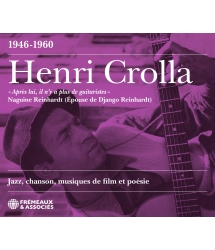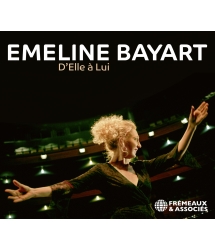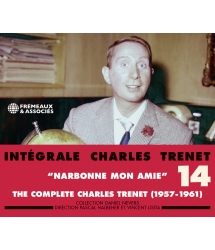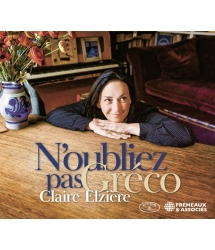- Our Catalog
- Philosophy
- Philosophers of the 20th century and today
- History of Philosophy (PUF)
- Counter-History and Brief Encyclopedia by Michel Onfray
- The philosophical work explained by Luc Ferry
- Ancient thought
- Thinkers of yesterday as seen by the philosophers of today
- Historical philosophical texts interpreted by great actors
- History
- Books (in French)
- Social science
- Historical words
- Audiobooks & Literature
- Our Catalog
- Jazz
- Blues
- Rock - Country - Cajun
- French song
- World music
- Africa
- France
- Québec / Canada
- Hawaï
- West Indies
- Caribbean
- Cuba & Afro-cubain
- Mexico
- South America
- Tango
- Brazil
- Tzigane / Gypsy
- Fado / Portugal
- Flamenco / Spain
- Yiddish / Israel
- China
- Tibet / Nepal
- Asia
- Indian Ocean / Madagascar
- Japan
- Indonesia
- Oceania
- India
- Bangladesh
- USSR / Communist songs
- World music / Miscellaneous
- Classical music
- Composers - Movie Soundtracks
- Sounds of nature
- Our Catalog
- Youth
- Philosophy
- News
- How to order ?
- Receive the catalog
- Manifesto
- Dictionnary











- Our Catalog
- Philosophy
- Philosophers of the 20th century and today
- History of Philosophy (PUF)
- Counter-History and Brief Encyclopedia by Michel Onfray
- The philosophical work explained by Luc Ferry
- Ancient thought
- Thinkers of yesterday as seen by the philosophers of today
- Historical philosophical texts interpreted by great actors
- History
- Books (in French)
- Social science
- Historical words
- Audiobooks & Literature
- Our Catalog
- Jazz
- Blues
- Rock - Country - Cajun
- French song
- World music
- Africa
- France
- Québec / Canada
- Hawaï
- West Indies
- Caribbean
- Cuba & Afro-cubain
- Mexico
- South America
- Tango
- Brazil
- Tzigane / Gypsy
- Fado / Portugal
- Flamenco / Spain
- Yiddish / Israel
- China
- Tibet / Nepal
- Asia
- Indian Ocean / Madagascar
- Japan
- Indonesia
- Oceania
- India
- Bangladesh
- USSR / Communist songs
- World music / Miscellaneous
- Classical music
- Composers - Movie Soundtracks
- Sounds of nature
- Our Catalog
- Youth
- Philosophy
- News
- How to order ?
- Receive the catalog
- Manifesto
- Dictionnary
GILBERT BECAUD
Ref.: FA5662
Label : Frémeaux & Associés
Total duration of the pack : 1 hours 9 minutes
Nbre. CD : 1
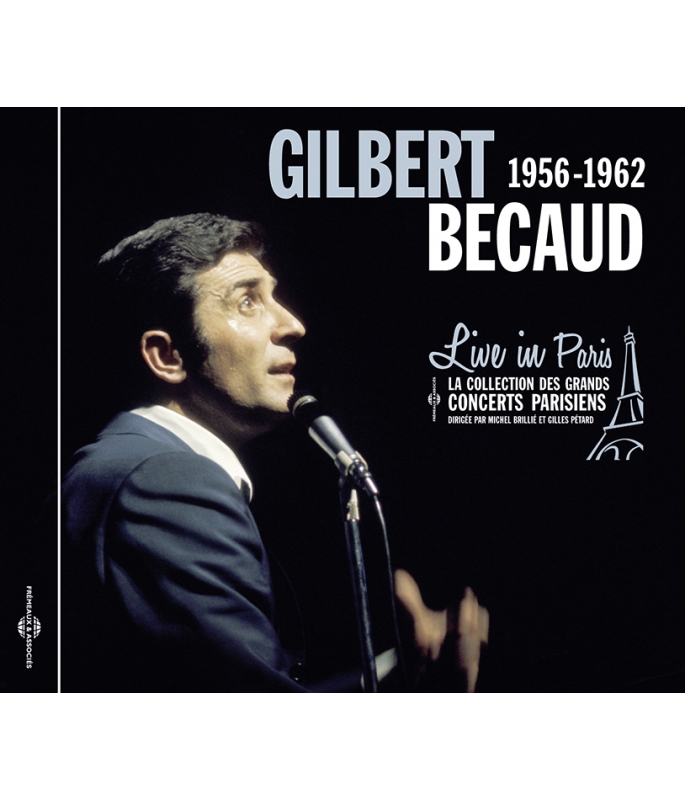
The songs of French singer-songwriter Gilbert Bécaud are the most often-performed pieces in the world. He was also a fantastic performer himself – he was called “Monsieur 100,000 volts” – and he had an extraordinary “feel” for lyrics and melody. This CD brings together rare, previously-unreleased titles that he sang at two of his Parisian concerts, the fi rst dating from 1956 – he was still a newcomer as an artist – and the second from 1962, only six years later, but by then he was internationally famous due to a series of his hits that had been adapted and picked up by other (major) artists worldwide. With an accompanying booklet by writer Laurent Balandras (managing editor of Gilbert Bécaud’s publishing company Les Nouvelles Editions Rideau Rouge, and a fi ne French Chanson specialist), these live recordings wonderfully capture the fi ery spirit and panache of a singer who always enjoyed a tremendous relationship with his audience. Patrick FRÉMEAUX
The Live in Paris collection by Michel Brillié allows listeners to hear previously-unreleased recordings (made at concerts and private- or radio-sessions) by the great 20th stars in jazz, rock & roll and song. These “live” takes, and the artists’ rapport with their audiences, gives these performances an additional soul and sensibility in counterpoint to the rigorous demands of studio recordings. Particular care was taken when restoring the sound of these tapes in order to meet CD standards while preserving the original colours of the period.
Patrick FRÉMEAUX & Gilles PÉTARD
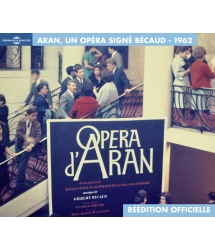
GILBERT BÉCAUD - OPERA D'ARAN
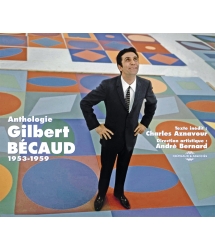
DIRECTION : ANDRÉ BERNARD AVEC LE CONCOURS DE CHARLES...
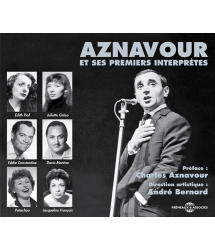
CHARLES AZNAVOUR



-
PisteTitleMain artistAutorDurationRegistered in
-
1CaGilbert BécaudCharles Aznavour00:01:541956
-
2Salut les copainsGilbert BécaudPierre Delanoë00:03:061956
-
3ViensGilbert BécaudCharles Aznavour00:01:441956
-
4Alors raconteGilbert BécaudJean Broussolle00:04:001956
-
5Le pianiste de VarsovieGilbert BécaudPierre Delanoë00:05:351956
-
6Ca claqueGilbert BécaudPierre Delanoë00:02:371956
-
7Le jour où la pluie viendraGilbert BécaudPierre Delanoë00:03:301956
-
8Quand tu dansesGilbert BécaudPierre Delanoë00:02:291956
-
9Présentation musiciens et Bruno CoquatrixGilbert BécaudGilbert Bécaud00:01:481956
-
10Le pays d'où je viensGilbert BécaudLouis Amade00:02:491956
-
11La villeGilbert BécaudCharles Aznavour00:05:341956
-
12Le marchand de ballonsGilbert BécaudLouis Amade00:02:371956
-
13CroquemitoufleGilbert BécaudLouis Amade00:03:521956
-
14Les marches de ProvenceGilbert BécaudLouis Amade00:03:581956
-
15Alleluia !Gilbert BécaudLouis Amade00:03:331956
-
16La ballade des baladinsGilbert BécaudLouis Amade00:03:041956
-
17Dans ces moments-làGilbert BécaudMaurice Vidalin00:01:381962
-
18Contre vousGilbert BécaudPierre Delanoë00:03:201962
-
19L'absentGilbert BécaudLouis Amade00:02:571962
-
20La grosse noceGilbert BécaudMaurice Vidalin00:04:491962
-
21Le bateau blancGilbert BécaudMaurice Vidalin00:01:051962
-
22Nous les copainsGilbert BécaudPierre Delanoë00:01:381962
-
23Si je m'en reviens au paysGilbert BécaudLouis Amade00:02:051962
Bécaud Live in Paris FA5662
GILBERT
BECAUD
Live in Paris
1956-1962
La collection des grands
concerts parisiens
Dirigée par Michel Brillié et Gilles Pétard
GILBERT BÉCAUD « Live in Paris » 1956-1962
Par Laurent BALANDRAS
Avec le débit d’un cheval au galop, le rire en cascade ponctuant ses interventions énergiques, Gilbert Bécaud réinvente le music-hall dans ces années 50 où s’opposent les roucoulades des chanteurs à accents tels Dario Moreno, Luis Mariano ou Gloria Lasso d’un côté et de l’autre, les auteurs-compositeurs-interprètes comme Georges Brassens, Jacques Brel ou Léo Ferré, qui offrent une majuscule au mot « Chanson ».
Déboulé sans crier garde, Gilbert Bécaud devient chanteur en 1953 sous l’impulsion de son pygmalion, le Préfet-poète Louis Amade, émerveillé par la puissance d’interprétation de cette pousse sauvage avec laquelle Édith Piaf lui a demandé de collaborer à l’écriture de chansons. Il aura suffi d’un titre, « Les croix », que se sont disputées les deux dames en noir, Édith Piaf et sa plus récente rivale, Juliette Gréco, pour imposer Bécaud, le compositeur, au sommet de l’affiche. Ce sera son premier enregistrement en tant que chanteur, même si le titre quitte rapidement son répertoire pour des œuvres davantage en phase avec sa personnalité, laissant une ribambelle d’autres interprètes s’accaparer ce premier succès, de Marjane à Yvette Giraud en passant par Damia ou l’orchestre du tout jeune Eddie Barclay.
Ce n’est pourtant pas son coup d’essai. Avant la rencontre décisive avec Louis Amade, Gilbert Bécaud a composé nombre de musiques de films dès sa sortie du conservatoire et écumé quelques piano-bars à la fin des années 40 où il a écrit ses premières chansons avec Maurice Vidalin qu’il retrouvera des années plus tard. Au Central de la Chanson, il a rencontré la fantaisiste Marie Bizet à la recherche d’un accompagnateur. C’est ainsi que Gilbert Bécaud s’immisce dans le milieu du music-hall. Dans le sillon de la chanteuse, se trouve un parolier dont la double particularité est d’exercer le métier d’inspecteur des impôts tout en se produisant le soir dans des cabarets en duo avec son beau-frère. Il a pris le nom de scène de Pierre Delanoë. Très vite, ils vont écrire ensemble pour tous ceux qui comptent. Outre Marie Bizet, le binôme est chanté par Yves Montand, Jean Sablon, Lucienne Boyer et surtout Jacques Pills. Ancien comparse de Georges Tabet avec lequel il a créé les premiers airs swing français composés par Mireille, Pills chante désormais en solo sous la houlette de son impresario, un certain Bruno Coquatrix. Une tournée mondiale s’annonce et c’est naturellement qu’il embarque avec lui le pianiste Bécaud pour les Amériques. Jacques Pills et Gilbert Bécaud profitent des longs trajets ou des moments de repos pour étoffer le répertoire de l’ancien duettiste (« Vol de nuit », « Formidable »). Pour l’une d’entre elle intitulée « Je t’ai dans la peau », ils envisagent de la proposer à la chanteuse française la plus célèbre dans le monde, Édith Piaf. Elle enregistre ce merveilleux blues en 1952, tombe amoureuse de l’auteur qu’elle épouse la même année à New York avec Marlene Dietrich pour témoin, et convie dans ses nuits créatives le talentueux compositeur avec lequel elle concocte de nouveaux titres qu’elle glisse à son répertoire (« Légende », « Elle a dit »). C’est dans le célèbre appartement de Piaf, Boulevard Lannes à Paris, que Gilbert Bécaud croise la route de Charles Aznavour. Ils s’inspirent mutuellement et se mettent illico à travailler tous les deux dans l’idée de proposer leurs services à des interprètes. C’est ainsi que « Mé qué mé qué » ou « Viens » seront d’abord chantées par Dario Moreno.
Les rapports entre Piaf et Bécaud sont houleux. Elle le surnomme « mon petit chien » ou « mon petit ouah », ne prend pas de gants pour jauger d’une ligne mélodique ou d’un refrain, bref, elle tape sur le système du jeune homme dont le caractère est tout aussi tranché. La rencontre qu’elle provoque entre le pianiste et Louis Amade va sauver Bécaud d’une situation à la fois valorisante puisqu’il est interprété par une légende vivante mais néanmoins dégradante, du moins, le conçoit-il ainsi, et bouleverser son destin.
Dès ses premiers enregistrements, Gilbert Bécaud va réveiller une jeunesse qui s’ignore. Avant lui, les ados et leurs parents écoutaient sensiblement les mêmes artistes. A partir de Bécaud, une profonde scission se crée. Bécaud sur scène, c’est un rythme qui fuse comme une locomotive à pleine vapeur, un corps agile qui ne tient pas en place et s’agite frénétiquement à en exciter les plus coincés, un physique de beau gosse qui fait se pâmer les demoiselles et les rend hystériques. La sensualité qui se dégage de certains textes et font rougir leurs parents, bref, il n’est de semblable que le phénomène Sinatra aux USA et cela préfigure la folie Presley qui s’emparera des teenagers du monde entier quelques années plus tard. Pour l’heure, il n’y a pas d’équivalent et Gilbert Bécaud devient en un temps record un phénomène de société qui divise la France jusqu’aux intellectuels. Jean Cocteau répand ostensiblement son amour pour Bécaud quand Boris Vian moque ce qu’il considère comme le phénomène d’une mode passagère. Insultes et dithyrambes se propagent avec pour effet d’augmenter considérablement la notoriété de l’artiste qui, lui, n’a rien demandé.
Le nom de Bécaud s’inscrit à l’affiche du nouvel Olympia dirigé par l’ex-impresario de Jacques Pills, Bruno Coquatrix, dès le soir de son inauguration en 1954. Il va marquer les esprits et la légende du music-hall un an plus tard. Le 17 février 1955, Bruno Coquatrix décide d’inviter gracieusement les étudiants lors de la matinée du spectacle de Gilbert Bécaud. L’information est relayée par une nouvelle station de radio, Europe n°1 dont l’un des directeurs n’est autre que Pierre Delanoë. Deux fois plus de spectateurs que ne peut en contenir la salle se pressent Boulevard des Capucines. A la fin du show, on compte les fauteuils cassés et, paraît-il, les petites culottes. Aux Etats-Unis où ses chansons voyagent déjà grâce à Sammy Davis Jr (« Back Track »), Malcolm Vaughan (« With your love ») ou le duo The Gaylords (« Mecqué, mecqué »), il n’en fallait pas plus pour affoler les journalistes qui affublent alors l’artiste du sobriquet « Mr 100 000 volts », un titre de gloire qui va coller à son patronyme pour le reste de sa vie.
Pour promouvoir leurs entreprises, Lucien Morisse décide d’associer la station de radio qu’il dirige, Europe n°1, à l’Olympia de son ami Bruno Coquatrix grâce à un rendez-vous régulier, le Musicorama. Ce concert unique sur scène est retransmis sur les ondes et pour inaugurer la série (qui se prolongera jusqu’en 1974), qui de plus légitime que Gilbert Bécaud ? Les seize premiers titres de ce CD sont enregistrés en décembre 1956. On y retrouve fidèlement le Bécaud des débuts, débitant à la mitraillette les textes signés par ses trois auteurs de prédilection, Charles Aznavour («Ça », « Viens »), Louis Amade (« Le marchand de ballons ») ou Pierre Delanoë (« Salut les copains », « Quand tu danses »), interpellant son public qu’il prendra l’habitude de tutoyer, soulignant de rires aux éclats sa joie intense d’habiter une scène qu’il va remplir à 33 reprises au cours de sa carrière, pendant des périodes de plusieurs semaines d’affilées, un record inégalé encore aujourd’hui. Si l’enthousiasme délirant du public s’avère nettement perceptible, Gilbert Bécaud réussit à imposer une vraie qualité d’écoute avec des chansons exigeantes telles « Le pianiste de Varsovie », la très rare « La ville » ou la chanson du film de Marcel Carné, « Le pays d’où je viens », sorti au cinéma quelques semaines plus tôt et dans lequel le chanteur tient les deux rôles principaux, comme si l’industrie du divertissement ne pouvait déjà plus envisager quoique ce soit sans Bécaud. On remarque déjà la propension de l’artiste à privilégier ses nouvelles créations au détriment de ses « anciens » succès. Ainsi, « Les Croix », « Mes mains » ou « C’était mon copain » laissent leur place à des titres qui ne seront publiés sur disque qu’en 1957 comme « le jour où la pluie viendra », « Alléluia » ou le fameux néologisme de Pierre Delanoë, le sensuel « Croquemitoufle », composé, dit-on, pour Brigitte Bardot, l’autre vedette sulfureuse propulsée par le film « Et Dieu créa la femme » encore à l’affiche au moment de ce Musicorama. Les deux stars s’apprêtent à enregistrer pour la télévision le show du jour de l’an et connaîtront pendant les quelques mois suivants une relation aussi intense que secrète, Gilbert Bécaud étant marié et papa de deux garçons.
Indirectement, Gilbert Bécaud va offrir deux autres cadeaux à cette jeunesse qu’il a contribué à faire éclore. Deux de ses chansons vont devenir les emblèmes des années yéyés qui s’annoncent : en 1959, l’émission de radio diffusée sur Europe n°1 qui va permettre à toute une génération d’éclore lui emprunte le titre « Salut les copains », avant de le décliner en magazine couleur vite concurrencé par un confrère qui se saisit d’une autre chanson du tandem Bécaud/ Delanoë pour se baptiser « Age tendre et têtes de bois », vite adaptée en émission de télévision.
Pour les sept derniers titres de cet album, on retrouve Gilbert Bécaud en avril 1962. Loin d’avoir été balayé par la nouvelle vague des Johnny, Sheila, Sylvie ou Cloclo, l’aîné est à son apogée. Plusieurs de ses chansons sont devenues des standards mondiaux : « Le jour où la pluie viendra » s’est imposée au sommet des charts aux USA et en Angleterre grâce à la version anglaise « The day the rains came » popularisée par Jane Morgan tandis que la version allemande voit triompher Dalida avec « Am tag als der regen kam ». Interprétée en 1961 par le duo The Everly Brothers, la chanson « Je t’appartiens », devenue « Let it be me », entame une carrière qui la place parmi les chansons françaises les plus reprises dans le monde. « Et maintenant », le dernier tube de Gilbert Bécaud traverse également l’Atlantique. « What now my love » sera chanté par les plus grands artistes, d’Elvis Presley à Shirley Bassey, de Frank Sinatra à Nana Mouskouri. De nos jours, il ne se passe pas un mois sans qu’une nouvelle version voit le jour quelque part sur la planète. Enfin, Gilbert Bécaud a renoué avec ses premières amours, la musique classique, en composant « L’Opéra d’Aran » sur un livret de Jacques-Emmanuel, le scénariste du film « Le pays d’où je viens », et des textes de Pierre Delanoë et Louis Amade. C’est au théâtre des Champs-Elysées que l’œuvre sera créée en octobre 1962 sous les yeux du Tout-Paris représenté par Marlene Dietrich, Jean Cocteau, La Begum, Catherine Deneuve, Romy Schneider, entre autres.
Pour l’heure, Bécaud swingue plus que jamais comme en témoigne cet enregistrement qui fait la part belle à ses nouvelles chansons magnifiées par un orchestre soutenu par des cuivres pour crooner « Dans ces moments-là » sur un texte de Maurice Vidalin, le complice retrouvé, ou le très jazzy « Contre vous », véritable petit bijou rythmique méconnu, sur des paroles inventives de Pierre Delanoë. Même « L’absent », texte déchirant écrit par Louis Amade en hommage à l’éditeur Raoul Breton, complice des premiers jours, prend des accents latinos dans cette version surprenante. L’inspiration teutonne de « La grosse noce » nous rappelle à quel point Bécaud est implanté dans le paysage musical allemand, quant au « Bateau Blanc », son interprète va vite l’adapter en italien (« La vela blanca »), un des nombreux pays où il mène de front sa carrière. Car Gilbert Bécaud chanteur se produit dans tous les pays, souvent en chantant dans la langue locale qu’il s’efforce d’apprendre, ce qui donne un sens tout particulier à sa chanson de clôture « Si je m’en reviens au pays ».
Quinze ans après sa disparition prématurée en décembre 2001, Gilbert Bécaud semble retrouver la place qu’il avait désertée : celle d’un artiste majeur et d’un compositeur dont les mélodies sont autant d’ambassadrices de la France aux quatre coins du monde, celle d’un chanteur qui a séduit plusieurs générations en 5 décennies d’une carrière impressionnante.
La parution de ces documents inédits éclaire cette bête de scène, l’artiste pour lequel on déclenchait des émeutes et dont la liste des succès donne le vertige. Une heure de concert avec Gilbert Bécaud, c’est tout un voyage haut en couleur qu’il nous est donné de revivre ici !
Laurent BALANDRAS
© FRÉMEAUX & ASSOCIÉS 2017
GILBERT BÉCAUD, “Live in Paris” 1956-1962
by Laurent BALANDRAS
His delivery was rapid fire and bursts of laughter punctuated his performances. Gilbert Bécaud re-invented the music-hall genre in those Fifties when the prevailing atmosphere was mostly the billing and cooing of singers with regional accents: Dario Moreno, Luis Mariano or Gloria Lasso on the one side, and singer-songwriters on the other, like Georges Brassens, Jacques Brel or Léo Ferré, who together gave the word “Chanson” its capital letter.
Erupting onto the scene without warning, Bécaud became a singer in 1953 at the instigation of his personal Pygmalion, the Prefect-poet Louis Amade: he marvelled at the power shown by such a performer, a wild natural offshoot chosen by Édith Piaf to collaborate in writing songs for her. One title, Les Croix, was enough — argued over by two ladies in black, Piaf and her latest rival Juliette Greco — to establish Bécaud as a headlining composer. It would also be his first record as a singer, even if the title didn’t last long in his repertoire, replaced by pieces that were more in phase with his personality. It was picked up by a gaggle of other artists from Marjane and Damia to Yvette Giraud, not forgetting the orchestra led by a young newcomer named Eddie Barclay.
But it wasn’t Bécaud’s first attempt at the business. Even before his decisive encounter with Louis Amade, Gilbert Bécaud had written a number of film soundtracks as soon as he’d left the Conservatoire to begin working his way through the piano-bars at the end of the Forties, where he would write his first songs with Maurice Vidalin; their paths would cross again years later. At the “Central de la Chanson” he met entertainer Marie Bizet, who was looking for an accompanist, and so Gilbert Bécaud slipped into the wings of variety. In the singer’s wake he came across a lyricist who was unusual in that he had two jobs: a tax inspector by day, he was one half of a cabaret-duo by night, when he appeared with his brother-in-law in clubs. He took the stage name Pierre Delanoë, later a household word in French song, and very quickly he and Bécaud became a tandem who would write for everyone who was anyone: in addition to Marie Bizet those who sang their titles included Yves Montand, Jean Sablon, Lucienne Boyer and, last but not least, Jacques Pills.
A former partner of Georges Tabet (with whom he gave the first performances of French swing tunes written by Mireille), Pills was now a solo artist under the wing of his impresario, a certain Bruno Coquatrix, and a world tour was suggested: he went to the Americas and naturally Pills took a pianist with him, Gilbert Bécaud. It was a long trip, and the pair took advantage of their time to fill out the repertoire of the former duettist, writing Vol de nuit and Formidable for example. There was one song — Je t’ai dans la peau — that they thought was good enough for the most famous French singer in the world, namely Édith Piaf. In 1952 she recorded that marvellous blues song, fell in love with its writer, married him in New York (with Marlene Dietrich as bridesmaid) and took the talented composer with her into the night, where they created new titles that went straight into her songbook: Légende, Elle a dit, etc. It was in Piaf’s famous Parisian apartment on the Boulevard Lannes that Gilbert crossed paths with Charles Aznavour. Each found inspiration in the other, and they both got down to work with an aim to offer their services to other artists. Their titles Mé qué mé qué and Viens found their way first to Dario Moreno.
Piaf and Bécaud had a stormy relationship. She called him “my little dog” or “my little bow-wow”, and didn’t put on any gloves to tell him what she thought of a melody or a chorus he’d written. In a word, she got on his nerves. Nor was Bécaud one to take it all lying down. When she organised a meeting between the pianist and Louis Amade it would save Bécaud from a situation that was worthwhile — after all, his songs were being performed by a legend — but at the same time degrading (or he thought it so, at least). Meeting Amade changed his destiny.
As soon as he made his first record Bécaud awakened a sleeping youngster he didn’t know he had inside him. Before Bécaud, teenagers listened to more or less the same artists as their parents; after Bécaud, a gulf was created. Bécaud was a rhythm that shot across a stage like a train at full steam; he couldn’t keep still, bouncing around in a frenzy that made the most reserved audience start to twitch; and he was so good-looking that girls either fainted or went into hysterics. There was also a sensuality in some of his lyrics that made the latter’s parents blush; in short, there was hardly any other singer like him, except for maybe Sinatra in the USA, as a forerunner of the “Elvis mania” that shook teenagers worldwide a few years later. For the time being, however, Gilbert Bécaud was alone, and became a phenomenon in record time: he divided France in two, not excluding the country’s intellectuals. Jean Cocteau took pains to broadcast his love for Bécaud at the same time as Boris Vian was poking fun at him for being what he considered to be a passing fad. Insults and praises proliferated but they only served to considerably increase the fame of an artist who, to be truthful, hadn’t asked for as much.
Bécaud’s name appeared on the bill at the new Olympia theatre (managed by Jacques Pills’ ex-impresario Bruno Coquatrix) as soon as the venue was inaugurated in 1954. Only a year later Bécaud would see his name become part of the music hall’s legend. On February 17, 1955, Coquatrix decided to open the theatre’s doors (for free) to students who came to the matinee performance of Gilbert Bécaud. The news was relayed by a new radio station called Europe N°1 (one of whose directors was Pierre Delanoë) and as a result of the publicity, the theatre on the Boulevard des Capucines found itself with twice as many spectators as it could hold… But the show took place anyway, and by the end, the staff were trying to count the number of broken seats and, it seems, the number of panties lying on the floor... The publicity reached far and wide. In the United States, where Bécaud’s songs had travelled thanks to the likes of Sammy Davis Jr. (Back Track), Malcolm Vaughan (With your love) or the Gaylords duo (Mecqué, mecqué), it was more than enough to excite journalists; who found a new nickname for Bécaud, “Mr 100,000 volts”, an honorary title that stuck to his name for the rest of his life.
To benefit and promote both of their concerns, Lucien Morisse, the director of radio station Europe N°1, and his friend Bruno Coquatrix, who ran the Olympia theatre, decided on a regular rendezvous that they christened “Musicorama”: a one-off concert onstage that would be broadcast over the air. To inaugurate their planned concert-series (it would last until 1974), who would be more legitimate than Gilbert Bécaud? The first sixteen titles of this CD were duly recorded in December 1956, and in them we can hear the faithful Bécaud of his debuts, rattling off songs like a machine-gun, with lyrics by his three favourite writers: Charles Aznavour (Ça, Viens), Louis Amade (Le marchand de ballons) and Pierre Delanoë (Salut les copains, Quand tu danses). You can also hear him exchanging with the audience — using the friendly, popular “tu” form of speech as if he knew everyone personally — and laughing out loud as if to prove the immense joy he felt when he came alive on a stage. The stage, by the way, was in a theatre he would fill no fewer than 33 times in the course of his career — for periods of up to several weeks at a time —, which remains a record to this day. While the delirious enthusiasm of his audiences was clearly tangible, Gilbert Bécaud succeeded in establishing genuine quality for the listening public, with demanding pieces like Le pianiste de Varsovie, the extremely rare song La ville, or else the tune in Marcel Carné’s film Le pays d’où je viens, which had been released to cinemas only a few weeks earlier, with the singer playing both the lead roles. It was as if the entertainment industry had already reached the point where nothing was conceivable without Gilbert Bécaud. What was already noticeable was the artist’s tendency to favour his new songs in preference to “old” hits: Les Croix, Mes mains or C’était mon copain gave way to titles that wouldn’t appear on record until 1957, like Le jour où la pluie viendra, Alléluia or Pierre Delanoë’s famous neologism, the sensual Croquemitoufle, supposedly composed for Brigitte Bardot, the other nefarious personality catapulted to stardom by Vadim’s And God Created Woman. In France the original title was Et Dieu créa la Femme, and it was still showing in cinemas when Bécaud’s Musicorama took place. At the time, the two stars, Bardot & Bécaud, were preparing a television show for New Year’s Day; over the next few months they would also have an affair, as intense as it was secret due to the fact that Bécaud was married and a father of two boys…
Indirectly, Bécaud would make two gifts to those same young people he was helping to mature as adults. Two of his songs would become emblems for those “Yéyé” years that were just around the corner: in 1959, a radio show went out from Europe N°1 under a name borrowed from Bécaud — his song Salut les copains — and then the same title was given to a new young people’s magazine; this review quickly found a competitor in the shape of another journal with a name borrowed from yet another of Bécaud’s songs, Age tendre et têtes de bois (co-written with Pierre Delanoë), and this magazine in turn was quickly adapted into… a television show.
The final seven titles in this set are Bécaud recordings dating from April 1962. Far from being swept away by the new wave of singers in vogue — Johnny, Sheila, Sylvie, Cloclo — Bécaud was continuing at his peak, with several songs that turned into international standards: Le jour où la pluie viendra went to the top of the charts in both the USA and in Britain thanks to its English adaptation as The day the rains came (made popular by Jane Morgan) while a German-language adaptation, Am Tag als der Regen kam, was a triumph for the singer Dalida. In 1961 The Everly Brothers duo took the song Je t’appartiens which, as Let it be me, went on to enjoy a career that made it one of the most reprised French songs in the world. And then there was Bécaud’s latest hit, Et maintenant, which also crossed the Atlantic: under the title What now, my love, it has been sung by the greatest artists from Presley to Shirley Bassey, and from Frank Sinatra to Nana Mouskouri. Even today, not a month goes by without a new version appearing somewhere around the globe. Finally, Gilbert Bécaud went back to his first love, classical music, when he composed L’Opéra d’Aran, with a libretto by Jacques-Emmanuel (he was the screenwriter of the film Le pays d’où je viens) and words by Pierre Delanoë and Louis Amade. The work was premiered at the Théâtre des Champs-Elysées in October 1962 in front of an audience of personalities whose names appeared in the Who’s Who: among those present were Marlene Dietrich, Jean Cocteau, the spouse of the Aga Khan (known as La Begum), Catherine Deneuve and Romy Schneider.
In April, when these final songs were recorded, Bécaud was swinging more than ever, and he was giving more room to his new songs, which were magnified at the session by an orchestra with a brass section to feature Bécaud as a crooner in Dans ces moments-là, with lyrics by Maurice Vidalin (he’d found his old accomplice again), or the very jazzy Contre vous, a real gem in rhythm, although little-known to many despite Pierre Delanoë’s inventive lyrics. Even L’absent, a heartbreaker written by Louis Amade in tribute to publisher Raoul Breton, one of their earliest partners in the business, takes on Latin accents in this surprising version. The German inspiration of La grosse noce is a reminder of Bécaud’s attachment to that country’s music scene, while Le Bateau Blanc would quickly see an Italian adaptation (La vela blanca) for Bécaud, whose visits to Italy confirmed the latter as another major interest in his career: in fact, Bécaud sang everywhere, and often he sang in the local language; he made enormous efforts to learn the language of any country where he appeared. It lends particular meaning to his closing song, Si je m’en reviens au pays.
Fifteen years after his unexpected death in December 2001, Gilbert Bécaud seems to have regained the status he abandoned: that of a major artist and composer, whose melodies are as many ambassadors for France the world over, and that of a singer who showed himself capable of seducing several generations over an awe-inspiring career spread over five decades. The release of these previously unheard documents throws light on a superb stage performer who could cause a riot, while a list of his hits on record simply makes your head spin. A whole hour in concert with Gilbert Bécaud! What an amazing journey this is!
Laurent BALANDRAS
Adapted into English by Martin DAVIES
© FRÉMEAUX & ASSOCIÉS 2017
The songs of French singer-songwriter Gilbert Bécaud are the most often-performed pieces in the world. He was also a fantastic performer himself – he was called “Monsieur 100,000 volts” – and he had an extraordinary “feel” for lyrics and melody. This CD brings together rare, previously-unreleased titles that he sang at two of his Parisian concerts, the first dating from 1956 – he was still a newcomer as an artist – and the second from 1962, only six years later, but by then he was internationally famous due to a series of his hits that had been adapted and picked up by other (major) artists worldwide. With an accompanying booklet by writer Laurent Balandras (managing editor of Gilbert Bécaud’s publishing company Les Nouvelles Editions Rideau Rouge, and a fine French Chanson specialist), these live recordings wonderfully capture the fiery spirit and panache of a singer who always enjoyed a tremendous relationship with his audience.
Patrick FRÉMEAUX
The Live in Paris collection by Michel Brillié allows listeners to hear previously-unreleased recordings (made at concerts and private- or radio-sessions) by the great 20th stars in jazz, rock & roll and song. These “live” takes, and the artists’ rapport with their audiences, gives these performances an additional soul and sensibility in counterpoint to the rigorous demands of studio recordings. Particular care was taken when restoring the sound of these tapes in order to meet CD standards while preserving the original colours of the period.
Patrick FRÉMEAUX & Gilles PÉTARD
Gilbert Bécaud, est l’auteur-compositeur français le plus repris dans le monde. Monsieur 100 000 volts, comme on le surnomme est une bête de scène qui possède un sens du mot et de la mélodie extraordinaire. Ce CD regroupe des titres rares inédits issus de deux concerts parisiens, la première session de 1956, où l’on peut encore le qualifier de jeune artiste, l’autre de 1962, seulement 6 ans après, mais où il est passé au rang d’artiste à renommée internationale, ayant déjà offert des tubes repris dans le monde entier. Le livret est rédigé par Laurent Balandras, auteur-éditeur, gérant des éditions de Gilbert Bécaud (Les nouvelles éditions Rideau Rouge) et grand spécialiste de la chanson française. Ce document live retransmet à merveille toute la fougue de l’artiste, comme sa relation généreuse et débordante avec le public.
Patrick FRÉMEAUX
La collection Live in Paris, dirigée par Michel Brillié, permet de retrouver des enregistrements inédits (concerts, sessions privées ou radiophoniques), des grandes vedettes du jazz, du rock & roll et de la chanson du XXe siècle. Ces prises de son live, et la relation avec le public, apportent un supplément d’âme et une sensibilité en contrepoint de la rigueur appliquée lors des enregistrements studios. Une importance singulière a été apportée à la restauration sonore des bandes, pour convenir aux standards CD tout en conservant la couleur d’époque.
Patrick FRÉMEAUX & Gilles PÉTARD
GILBERT BECAUD
1. Ça 1’54
2. Salut les copains 3’06
3. Viens 1’44
4. Alors raconte 4’00
5. Le pianiste de Varsovie 5’35
6. Ça claque 2’37
7. Le jour où la pluie viendra 3’30
8. Quand tu danses 2’29
9. Présentation musiciens & Bruno Coquatrix 1’48
10. Le pays d’où je viens 2’49
11. La ville 5’34
12. Le marchand de ballons 2’37
13. Croquemitoufle 3’52
14. Les marchés de Provence 3’58
15. Alleluia 3’33
16. La ballade des baladins 3’04
17. Dans ces moments-là 1’38
18. Contre vous 3’20
19. L’absent 2’57
20. La grosse noce 4’49
21. Le bateau blanc 1’05
22. Nous les copains 1’38
23. Si je m’en reviens au pays 2’05
